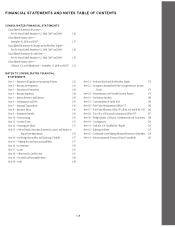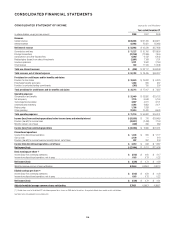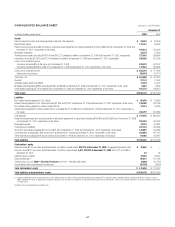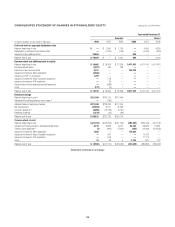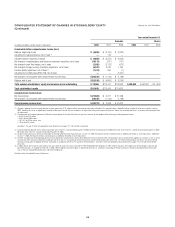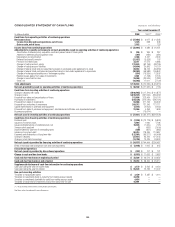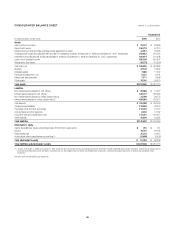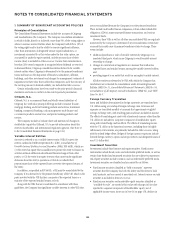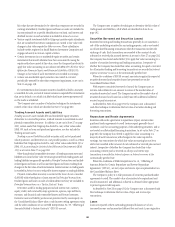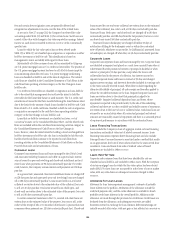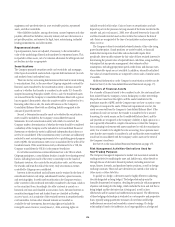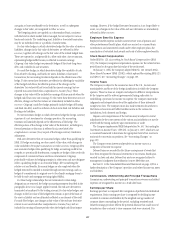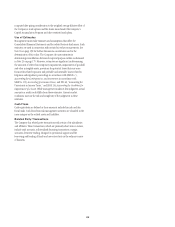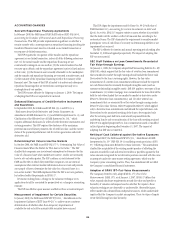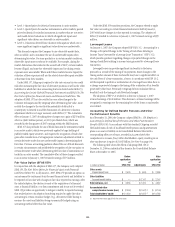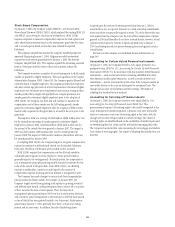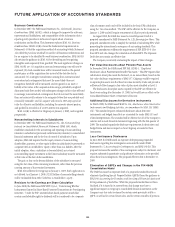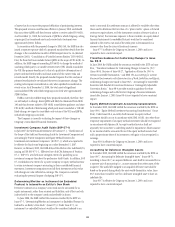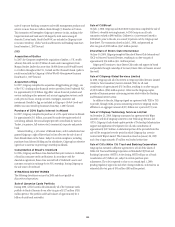Citibank 2008 Annual Report Download - page 131
Download and view the complete annual report
Please find page 131 of the 2008 Citibank annual report below. You can navigate through the pages in the report by either clicking on the pages listed below, or by using the keyword search tool below to find specific information within the annual report.charge-off to the allowance, and are subsequently accounted for as securities
available-for-sale.
In the Corporate portfolios, larger-balance, non-homogeneous exposures
representing significant individual credit exposures are evaluated based upon
the borrower’s overall financial condition, resources, and payment record,
the prospects for support from any financially responsible guarantors and, if
appropriate, the realizable value of any collateral. Reserves are established
for these loans based upon an estimate of probable losses for the individual
loans deemed to be impaired. This estimate considers all available evidence
including, as appropriate, the present value of the expected future cash flows
discounted at the loan’s contractual effective rate, the secondary market
value of the loan and the fair value of collateral less disposal costs. The
allowance for credit losses attributed to the remaining portfolio is established
via a process that estimates the probable loss inherent in the portfolio based
upon various analyses. These analyses consider historical and project default
rates and loss severities, internal risk ratings, and geographic, industry, and
other environmental factors. Management also considers overall portfolio
indicators, including trends in internally risk-rated exposures, classified
exposures, cash-basis loans, historical and forecasted write-offs, and a review
of industry, geographic, and portfolio concentrations, including current
developments within those segments. In addition, management considers the
current business strategy and credit process, including credit limit setting
and compliance, credit approvals, loan underwriting criteria, and loan
workout procedures.
For Consumer loans, each portfolio of smaller-balance, homogeneous
loans—including consumer mortgage, installment, revolving credit, and
most other consumer loans—is collectively evaluated for impairment. The
allowance for loan losses attributed to these loans is established via a process
that estimates the probable losses inherent in the portfolio based upon
various analyses. These include migration analysis, in which historical
delinquency and credit loss experience is applied to the current aging of the
portfolio, together with analyses that reflect current trends and conditions.
Management also considers overall portfolio indicators, including historical
credit losses, delinquent, non-performing, and classified loans, trends in
volumes and terms of loans, an evaluation of overall credit quality, the credit
process, including lending policies and procedures, and economic,
geographical, product and other environmental factors.
In addition, valuation allowances are determined for impaired smaller-
balance homogenous loans whose terms have been modified due to the
borrowers’ financial difficulties and it was determined that a concession was
granted to the borrower. Such modifications may include interest rate
reductions, principal forgiveness and/or term extensions. These allowances
are determined by comparing estimated cash flows of the loans discounted at
the loans’ original contractual interest rates to the carrying value of the
loans.
Allowance for Unfunded Lending Commitments
A similar approach to the allowance for loan losses is used for calculating a
reserve for the expected losses related to unfunded loan commitments and
standby letters of credit. This reserve is classified on the balance sheet in
Other liabilities.
Mortgage Servicing Rights (MSRs)
Mortgage servicing rights (MSRs), which are included in Intangible assets
in the Consolidated Balance Sheet, are recognized as assets when purchased
or when the Company sells or securitizes loans acquired through purchase or
origination and retains the right to service the loans.
With the Company’s electing to early-adopt SFAS 156, Accounting for
Servicing of Financial Assets, as of January 1, 2006, MSRs in the U.S.
mortgage and student loan classes of servicing rights are accounted for at
fair value, with changes in value recorded in current earnings. Upon electing
the fair-value method of accounting for its MSRs, the Company discontinued
the application of SFAS 133 fair-value hedge accounting, the calculation of
amortization and the assessment of impairment for the MSRs. The MSR
valuation allowance at the date of adoption of SFAS 156 was written off
against the recorded value of the MSRs.
Prior to 2006, only the portion of the MSR portfolio that was hedged with
instruments qualifying for hedge accounting under SFAS 133 was recorded at
fair value. The remaining portion, which was hedged with instruments that
did not qualify for hedge accounting under SFAS 133, was accounted for at
the lower of cost or market. Servicing rights retained in the securitization of
mortgage loans were measured by allocating the carrying value of the loans
between the assets sold and the interests retained, based on the relative fair
values at the date of securitization. MSRs were amortized using a
proportionate cash flow method over the period of the related net positive
servicing income to be generated from the various portfolios purchased or
loans originated. Impairment of MSRs was evaluated on a disaggregated
basis by type (i.e., fixed rate or adjustable rate) and by interest-rate band,
which were believed to be the predominant risk characteristics of the
Company’s servicing portfolio. Any excess of the carrying value of the
capitalized servicing rights over the fair value by stratum was recognized
through a valuation allowance for each stratum and charged to the
provision for impairment on MSRs.
Additional information on the Company’s MSRs can be found in Note 23
to the Consolidated Financial Statements on page 175.
Goodwill
Goodwill represents an acquired company’s acquisition cost over the fair
value of net tangible and intangible assets acquired. Goodwill is subject to
annual impairment tests, whereby Goodwill is allocated to the Company’s
reporting units and an impairment is deemed to exist if the carrying value of
a reporting unit exceeds its estimated fair value. Furthermore, on any
business dispositions, Goodwill is allocated to the business disposed of based
on the ratio of the fair value of the business disposed of to the fair value of
the reporting unit.
Intangible Assets
Intangible assets—including core deposit intangibles, present value of
future profits, purchased credit card relationships, other customer
relationships, and other intangible assets, but excluding MSRs—are
amortized over their estimated useful lives. Intangible assets deemed to have
indefinite useful lives, primarily certain asset management contracts and
trade names, are not amortized and are subject to annual impairment tests.
An impairment exists if the carrying value of the indefinite-lived intangible
asset exceeds its fair value. For other Intangible assets subject to
amortization, an impairment is recognized if the carrying amount is not
recoverable and exceeds the fair value of the Intangible asset.
Other Assets and Other Liabilities
Other assets includes, among other items, loans held-for-sale, deferred tax
assets, equity-method investments, interest and fees receivable, premises and
125


